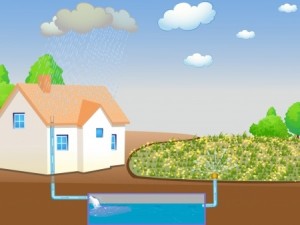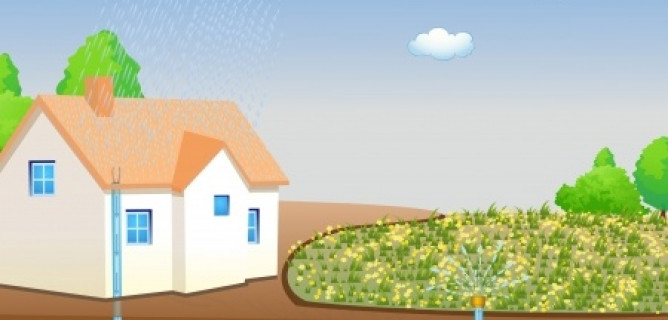 Despite our abundant supply of clean water, it remains, by its very nature a valuable resource that should be conserved and protected. As a result, more and more people are paying attention to the amount of water they use and are cutting back by using water wisely and purchasing water efficient fixtures and appliances.
Despite our abundant supply of clean water, it remains, by its very nature a valuable resource that should be conserved and protected. As a result, more and more people are paying attention to the amount of water they use and are cutting back by using water wisely and purchasing water efficient fixtures and appliances.
Another way to conserve water is by using auxiliary water sources, if permitted, to supplement and conserve the local public water supply. Auxiliary water includes everything from rainwater collected from your downspouts, to “greywater” that’s collected from the laundry or shower, treated and reused for non-drinking purposes around your house.
If you’re thinking about using auxiliary water sources in your home, the following tips can help you supplement your water supply while keeping your family safe and healthy:
- If you’re building or renovating a house, find out from your local building department what’s allowed, what is not and what may be required to get municipal approvals.
- Auxiliary water sources must use a separate plumbing system so it is not mixed with your potable water. Talk to your builder, architect, renovator or plumber as early in the process as possible about including auxiliary water-ready components in your home. This may include dedicated piping for auxiliary water as well as any related storage and treatment systems. Planning for those components now could save you a great deal of time and money in renovations later whether or not you include the auxiliary supply today or at some point in the future.
- Work with your contractor to determine how much water and what level of water quality is needed for different uses in your home. This will help ensure the system is designed properly and will be able to supply all the water your family needs, at whatever level of quality you require.
- Make sure you know where the water you’re collecting comes from, and what you will be using it for. Not all of the water you collect from different fixtures can be used for the same purposes. For example, water that’s collected from your shower might be safely treated and reused to flush your toilet. But only fully potable (or “drinkable”) water should ever be used in the shower itself. Again, make sure you check with your municipality.
- Depending on what you are using the auxiliary water for you may also need to think about storing the water before it is used. For instance, rainwater collected from your downspouts to water your lawn is often used immediately, without any further treatment. But if you’re collecting greywater for use in toilet flushing you may need to treat and store that water so it is available when you need it.
- Lastly, find out what programs or regulations are in effect in your area when it comes to auxiliary water. Some communities offer rebates for homeowners who use auxiliary water. Other cities may have rules in place that limit which kind of water you can reuse. Always check with your local municipality or water authority before you install an auxiliary water system in your home.
Source: CMHC
Courtland Building Company would love to help you plan your green home, call us today: (281) 932-4494
Visit our website: www.courtlandbuildingcompany.com Follow Us on Facebook – Twitter – LinkedIn– Google Plus


